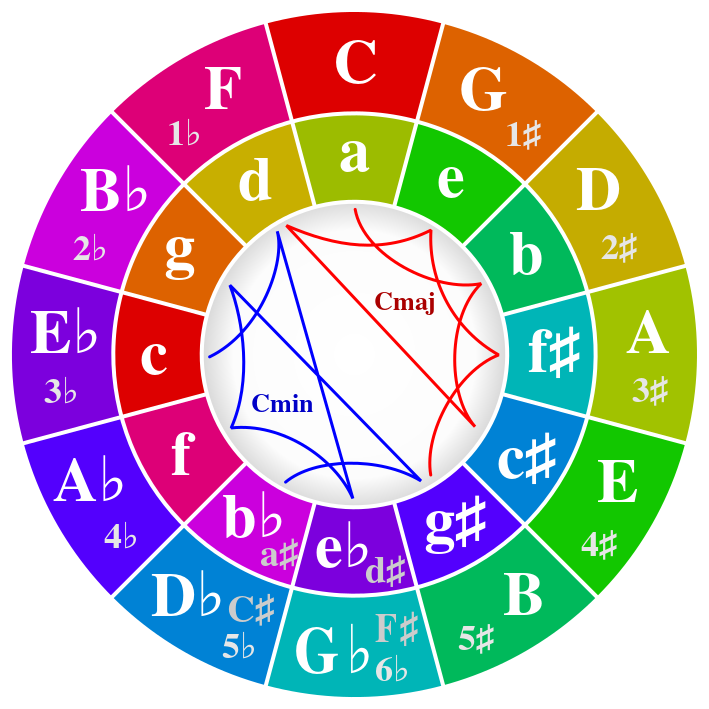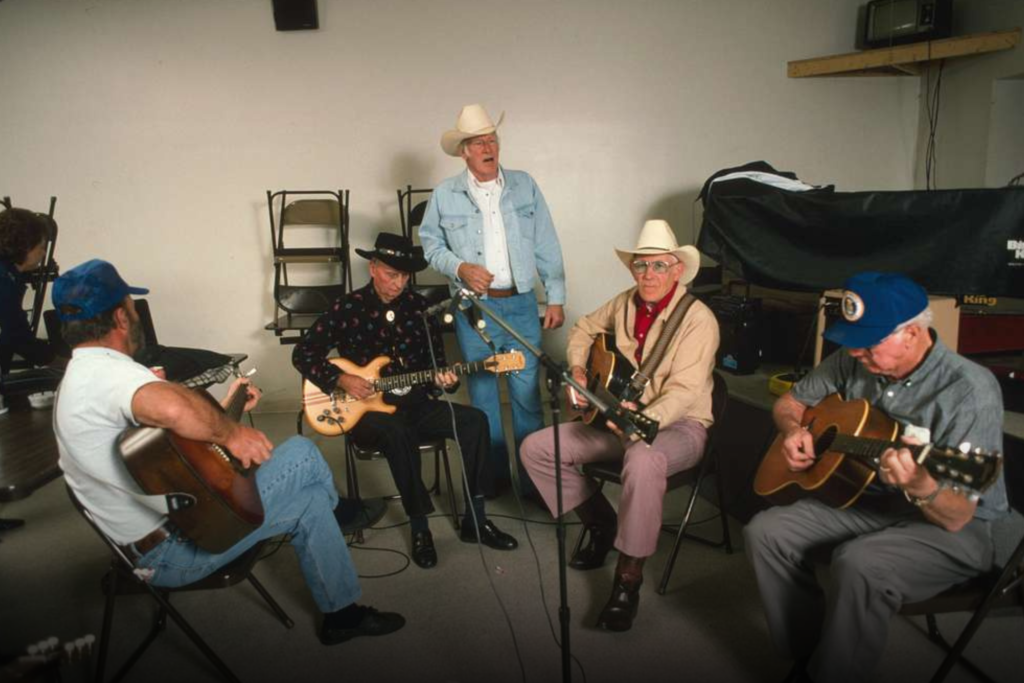So, you’ve picked up a guitar, watched a few tutorials, and now you’re strumming along to your favorite songs. Easy, right? Well, kind of. While learning guitar is a thrilling experience, beginners often miss some crucial steps in the rush to shred like Slash or strum like Jack Johnson.
Let’s be honest, no one wants to dwell on the “boring stuff,” but if you overlook these essential elements, your progress might hit a wall. Whether it’s finger strength, rhythm, or even just tuning your guitar, skipping these fundamentals will slow you down big time.
But don’t worry—we’ve got you covered! In this deep dive, we’ll talk about all the often-overlooked aspects of guitar learning that every beginner needs to know. By the time you finish this, you’ll be ready to rock with confidence.
Contents
- 1 1. Finger Strength and Dexterity: The Slow Burn You Didn’t See Coming
- 2 2. Rhythm: It’s Not Just For Drummers
- 3 3. Proper Posture: Sit Up Straight Before You Wreck Your Back
- 4 4. Tuning Your Guitar: Please Don’t Play Out of Tune
- 5 5. Ear Training: Don’t rely on tabs alone.
- 6 6. Stretching: The Key to Injury-Free Playing
- 7 7. Patience: The Unsung Hero of Guitar Mastery
- 8 8. The Joy of Experimenting: Don’t Be Afraid to Get Weird
- 9 9. Strumming and Picking Techniques: It’s More Than Just Up and Down
- 10 10. The Importance of Rest and Recovery: Give Your Hands a Break
- 11 11. Understanding Music Theory: The Secret Sauce for Guitar Greatness
- 12 12. Gear Knowledge: It’s Not Just About the Guitar
- 13 Final Thoughts: Master the Overlooked, Master the Guitar
1. Finger Strength and Dexterity: The Slow Burn You Didn’t See Coming
You might be imagining yourself playing “Eruption” by Van Halen at lightning speed, but let’s start with the basics—finger strength. Without strong, flexible fingers, you’ll find yourself struggling with even the simplest chord transitions. Beginners often overlook the importance of building finger dexterity, focusing instead on learning songs as quickly as possible.
Why Finger Strength Matters
Think about it: your fingers are like the engine behind every note, riff, and chord. You need to train them to move quickly and accurately. When you’re a beginner, your fingers feel slow and clumsy, but with the right exercises, you’ll gain strength and control over time.
Exercises to Build Finger Strength
Here are a few essential exercises:
- Spider Walks: Place your fingers on the frets, one per fret, and slowly play each note while moving up and down the neck.Do this daily to build strength.
- Finger Stretches: Gently pull each finger back towards your wrist to stretch the tendons. This helps prevent cramping.
- Hammer-ons and Pull-offs: These not only add flair to your playing but are also fantastic for finger strength.
2. Rhythm: It’s Not Just For Drummers
Everyone wants to be the next Slash, but what many guitarists don’t realize is that rhythm is what holds it all together. If you’re off-beat, even the most beautiful riff will sound like a mess. Unfortunately, beginners often focus on playing the notes right but not on playing them in time.
What is Rhythm Guitar?
Rhythm guitar is about supporting the song’s groove and keeping the beat steady. It’s the foundation for everything that happens musically, and without it, even the flashiest solo will fall flat.
How to Improve Your Rhythm
- Use a Metronome: Yes, it’s boring, but it works. Start by playing simple chords or notes in time with a metronome. Gradually increase the tempo as you improve.
- Practice Strumming Patterns: Many beginners stick to basic up-and-down strumming. Mix it up! Learn different strumming patterns to add variety and groove to your playing.
- Jam with Others: Nothing improves your rhythm like playing with other musicians. You’ll learn to lock in with a drummer or bass player, and your timing will improve naturally.

3. Proper Posture: Sit Up Straight Before You Wreck Your Back
As a beginner, you’re so focused on getting your fingers to hit the right notes that you probably haven’t thought about your posture. But trust me, bad posture can sneak up on you, leading to back and neck pain. Worse, it can limit your ability to play for long periods.
Why Posture Matters
Slouching or hunching over your guitar not only causes discomfort but also restricts your range of motion. Good posture keeps your body aligned and your hands in the best position to play comfortably for hours.
How to Fix Your Posture
- Sit up Straight: Keep your back straight, your shoulders relaxed, and your feet flat on the ground.
- Adjust Your Guitar Strap: Whether you’re sitting or standing, make sure your strap keeps the guitar at a comfortable height. If the guitar is too low, you’ll end up hunching over.
- Take Breaks: Every 30 minutes or so, take a short break to stretch your back and shoulders. This will prevent stiffness and strain.
4. Tuning Your Guitar: Please Don’t Play Out of Tune
Here’s a rookie mistake: playing without tuning your guitar. Beginners sometimes forget to tune before they start playing, and believe me, it’s one of the worst things you can do for your ear and technique.
Why Tuning is Crucial
Playing out of tune isn’t just annoying for others; it also messes with your ability to develop your ears. Over time, you’ll learn to hear when a note is off, but until then, a tuner is your best friend.
How to Tune Like a Pro
- Use a Digital Tuner: These days, clip-on tuners are inexpensive and easy to use. Always check your tuning before a practice session or performance.
- Tune by Ear: As you advance, practice tuning your guitar by ear. Start by tuning one string to a reference pitch, and then tune the rest by matching the notes.
- Check Regularly: Even after you’ve tuned your guitar, give it a quick check throughout your practice. Temperature changes or bent strings can cause guitars to go out of tune.

5. Ear Training: Don’t rely on tabs alone.
While tabs are a great tool for learning songs, developing your ear can yield significant benefits. Many beginners skip ear training, thinking they’ll just rely on chord charts or tutorials. Training your ear, however, can help you truly understand music and dramatically improve your playing.
Why Ear Training is Important
When you can identify chords, intervals, and scales by ear, you’ll be able to learn songs faster and play more confidently. It also makes improvising and songwriting much easier.
How to Train Your Ear
- Sing the Notes: Try singing the notes or scales you’re playing. It connects your voice to your ear, helping you understand the relationship between notes.
- Learn Songs by Ear: Pick simple songs and try to figure them out without tabs. Start with melodies or single-note riffs, and as your ear develops, work your way up to more complex pieces.
- Use Ear Training Apps: There are plenty of apps that help you practice recognizing intervals and chords. Spend just 10 minutes a day, and you’ll notice a difference.
6. Stretching: The Key to Injury-Free Playing
Stretching might sound like something athletes do before a game, but it’s just as important for guitarists. Repetitive motions like fretting, strumming, and picking can lead to strain and injury over time if you’re not careful.
Why Stretching is Essential
Playing the guitar puts a lot of strain on your fingers, wrists, and forearms, requiring them to warm up just like any other muscle. Stretching helps prevent stiffness, soreness, and even long-term injuries like tendinitis or carpal tunnel.
Effective Guitar Stretches
- Finger Stretches: Spread your fingers wide and hold the stretch for a few seconds, then relax. Repeat a few times to loosen up the tendons.
- Wrist Circles: Hold your arm out in front of you and make slow circles with your wrist to loosen up the joints.
- Forearm Stretch: To stretch the forearm muscles, gently pull your fingers back toward your wrist.
7. Patience: The Unsung Hero of Guitar Mastery
Let’s be real: learning guitar can be frustrating. You want to play your favorite songs NOW, but your fingers just won’t cooperate. The truth is, patience is one of the most important skills you’ll need to develop as a guitarist. If you try to rush through things, you’ll end up with harmful habits that are hard to break later on.
Why Patience is Key
Learning guitar is like learning a new language—it takes time to build fluency. If you skip the fundamentals or rush through exercises, you’ll miss out on important muscle memory and technique.
How to Stay Patient
- Set Small Goals: Instead of trying to learn an entire song in one sitting, focus on mastering a few bars or a single riff. Celebrate small victories, and your progress will come faster than you think.
- Track Your Progress: Keep a practice journal and write down what you’ve worked on each day. Looking back at how far you’ve come is a great way to stay motivated.
- Break Things Down: If you’re struggling with a tricky chord or solo, break it into smaller pieces. Focus on mastering one section at a time. Trying to tackle everything at once can be overwhelming and counterproductive.
- Break Things Down: If you’re struggling with a tricky chord or solo, break it into smaller pieces. Focus on mastering one section at a time. Trying to tackle everything at once can be overwhelming and counterproductive.
- Reward Yourself: Don’t forget to celebrate your wins. Whether it’s nailing a difficult chord change or playing through an entire song without mistakes, give yourself credit where it’s due!
8. The Joy of Experimenting: Don’t Be Afraid to Get Weird
Beginners often feel like they need to stick to a rigid learning path—chords, scales, and songs in a specific order. But sometimes, the best way to improve is by breaking the rules. Just pick up your guitar and play anything. Try out weird sounds, odd chord progressions, or even random strumming patterns. The key is to let your creativity run wild.
Why Experimenting is Crucial
Exploring new sounds and techniques without any pressure can boost your confidence and creativity. It’s in these moments that you might discover your unique playing style. Plus, it keeps the learning process fun and exciting.
How to Start Experimenting
- Jam with Backing Tracks: Use online backing tracks or loop a rhythm part and solo over it. Don’t worry about hitting the “right” notes—just focus on expressing yourself.
- Try Different Tunings: Standard tuning is great, but trying out alternate tunings can open up a world of new sounds. For example, give drop D or open G a shot!
- Play Without a Plan: Sometimes, the best way to experiment is by going into a practice session with no goals. Just let your fingers explore the fretboard.
9. Strumming and Picking Techniques: It’s More Than Just Up and Down
When you first start playing, strumming seems pretty straightforward—up, down, up, down, right? But once you start to dive deeper into playing, you’ll realize there’s a lot more nuance to strumming and picking. Many beginners focus solely on the left hand, not realizing how important the right hand is to creating a pleasing sound.
Different Picking Techniques
- Alternate Picking: This involves alternating between downstrokes and upstrokes while playing. It’s one of the most efficient ways to play fast and clean.
- Economy Picking: This is a more advanced technique where you blend alternate picking with sweeping, ensuring that your pick moves the shortest possible distance between strings.
- Fingerpicking: For a softer, more intricate sound, try fingerpicking. Compared to using a pick, it allows for greater control and a different tonal quality.
Mastering Strumming Patterns
- Vary Your Dynamics: Don’t always strum at full force! To add emotional depth to your playing, try strumming softer in some parts and harder in others.
- Mute Your Strings: Use your palm to mute the strings and create a more percussive sound. It adds rhythm and a unique texture to your playing.
10. The Importance of Rest and Recovery: Give Your Hands a Break
You’re probably eager to practice every day (which is great!), but over-practicing without giving your hands proper rest can lead to injury. Guitar playing uses muscles and tendons that need time to recover, especially when you’re pushing them to learn new skills.
Why Rest is Necessary
Continuous playing without breaks can lead to repetitive strain injuries like tendinitis or carpal tunnel syndrome. Giving yourself time to recover will help you play longer, both in the short term (within a practice session) and throughout your life as a guitarist.
How to Rest Properly
- Take Breaks During Practice: Every 20-30 minutes, take a 5-minute break to shake out your hands, stretch your fingers, and relax your shoulders.
- Alternate Hands: If one hand is fatigued, spend some time focusing on exercises or techniques for the other hand. For example, practice right-hand picking patterns or fingerstyle while giving your fretting hand a rest.
- Listen to Your Body: If something starts to hurt, stop! Pain is a signal that something’s wrong, and playing through it can lead to injury.
11. Understanding Music Theory: The Secret Sauce for Guitar Greatness
Okay, let’s talk about music theory. For some reason, music theory gets a bad rap among beginners—it sounds boring, complicated, and unnecessary. But once you get the hang of it, it opens up a whole new level of understanding and creativity.
Why Music Theory is Important
Knowing how chords and scales work together will make learning songs easier, improve your songwriting skills, and help with improvisation. It’s not about memorizing boring facts; it’s about giving you the tools to make better musical decisions.
Music Theory Basics for Guitarists
- Scales and Chords: Learn how different scales relate to chords. For example, knowing that a C major scale works over a C major chord will help you create melodies.
- Chord Progressions: Understand how the chords in a key relate to each other. You’ll start to recognize common progressions in songs and even create your own.
- Intervals: Get familiar with the distance between notes (e.g., a third, a fifth). This will help with understanding harmony and creating more interesting solos.

12. Gear Knowledge: It’s Not Just About the Guitar
As a beginner, your main focus is probably on learning how to play. But knowing your gear—your guitar, amp, pedals, etc.—is just as important. The way you use your gear can completely change your sound, and many beginners don’t take the time to explore their setup fully.
Why Gear Knowledge Matters
Understanding how to adjust your guitar’s settings or how different pedals work can help you find your unique sound. Plus, knowing your gear inside and out will help you troubleshoot issues like tuning problems or unwanted feedback.
Getting to Know Your Gear
- Understand Your Amp: Learn how to use your amp’s EQ settings (bass, mid, treble) to shape your tone. Experiment with different levels to see how it affects your sound.
- Explore Pedals: Start with basic pedals like distortion, delay, and reverb, and experiment with how they change your tone. You don’t need a huge pedalboard to create interesting sounds.
- Guitar Setup: Learn how to change your strings, adjust your action, and check your guitar’s intonation. These small tweaks can make a huge difference in how your guitar plays and sounds.
Final Thoughts: Master the Overlooked, Master the Guitar
Learning guitar isn’t just about playing songs—it’s about building a solid foundation of skills, techniques, and habits that will set you up for a lifetime of playing. Whether it’s finger strength, rhythm, or gear knowledge, these often-overlooked areas will help you become a well-rounded guitarist. And most importantly, have fun! It’s easy to get caught up in what you should be doing, but at the end of the day, playing guitar is all about enjoying the process.
So take a deep breath, pick up your guitar, and get ready to really level up your playing. The path may seem long, but trust me—it’s worth every minute.
Bonus Tip: Join a Guitar Community
Connecting with other guitarists—whether in person or online—can help you stay motivated, learn faster, and get valuable feedback. Join forums, attend open mics, or simply jam with friends. The guitar world is full of supportive people who’ve been where you are and are happy to help.

Now, it’s your turn. Start incorporating these often-overlooked aspects of guitar learning into your practice routine, and watch your progress skyrocket. Keep playing, keep experimenting, and, most importantly, keep having fun.














